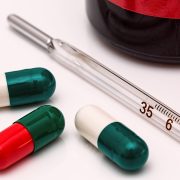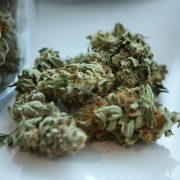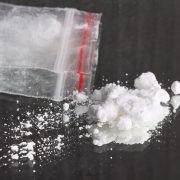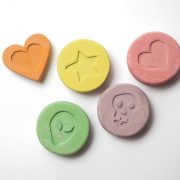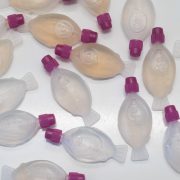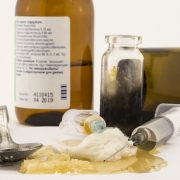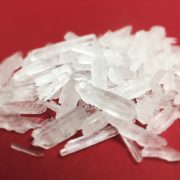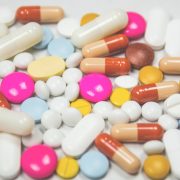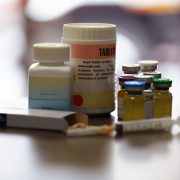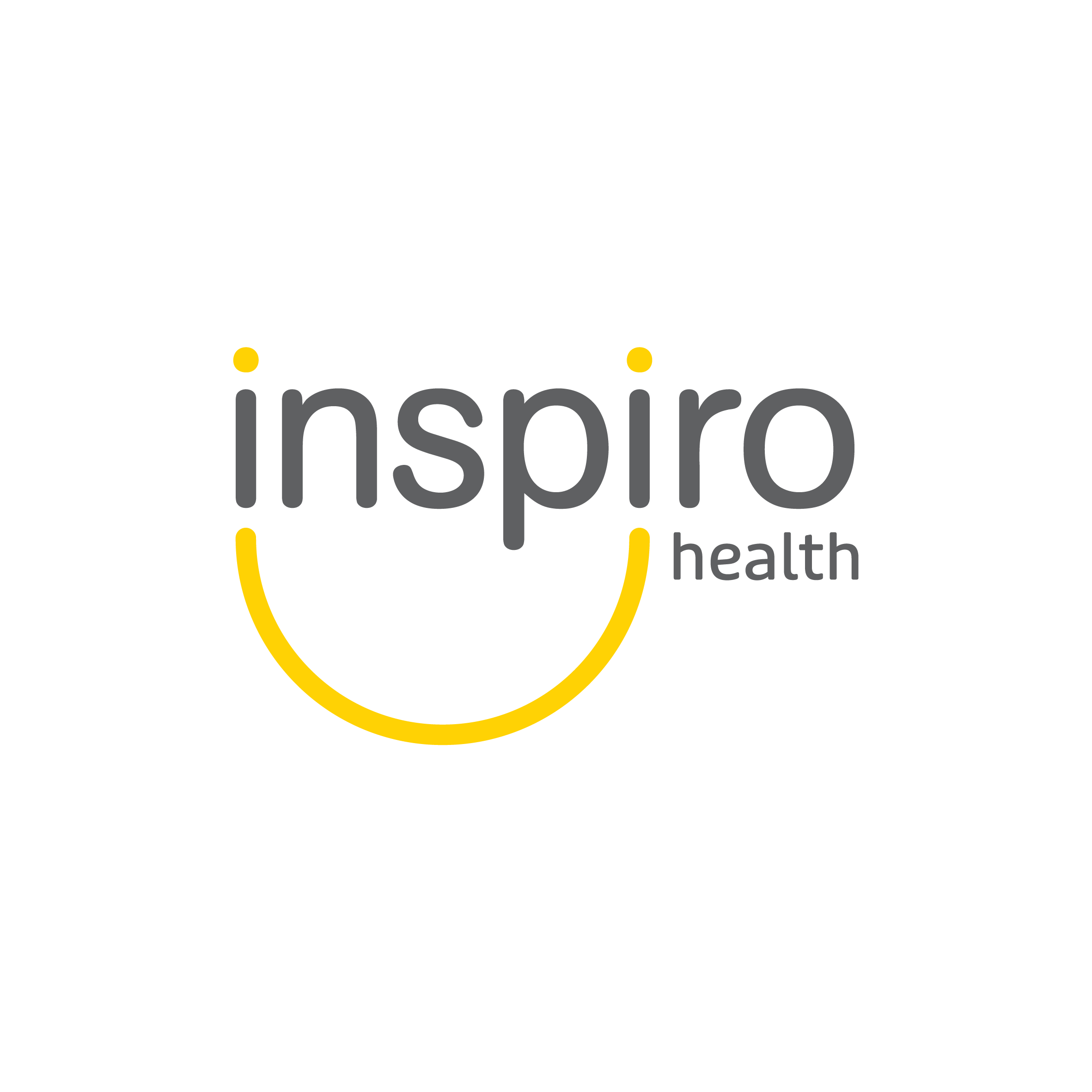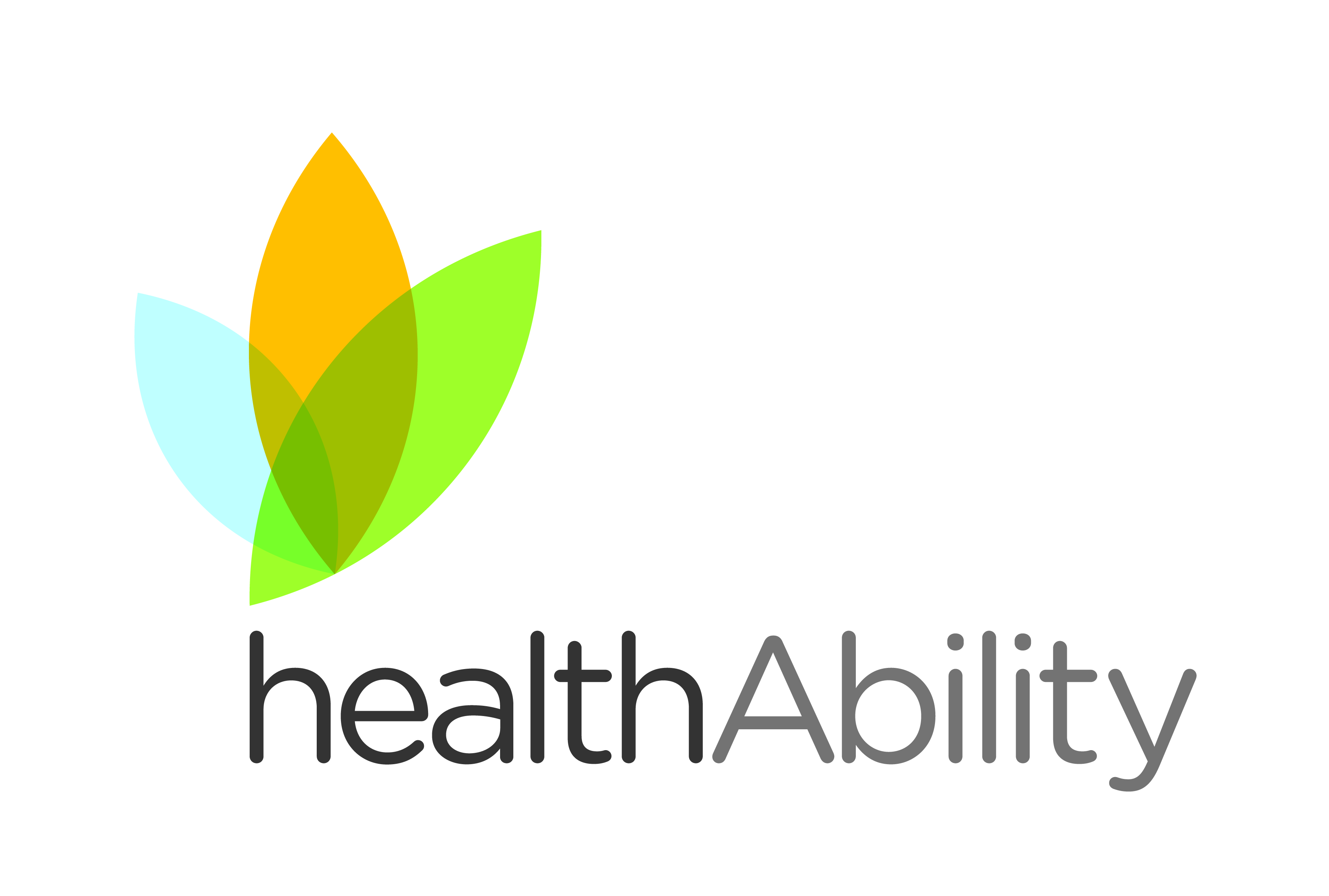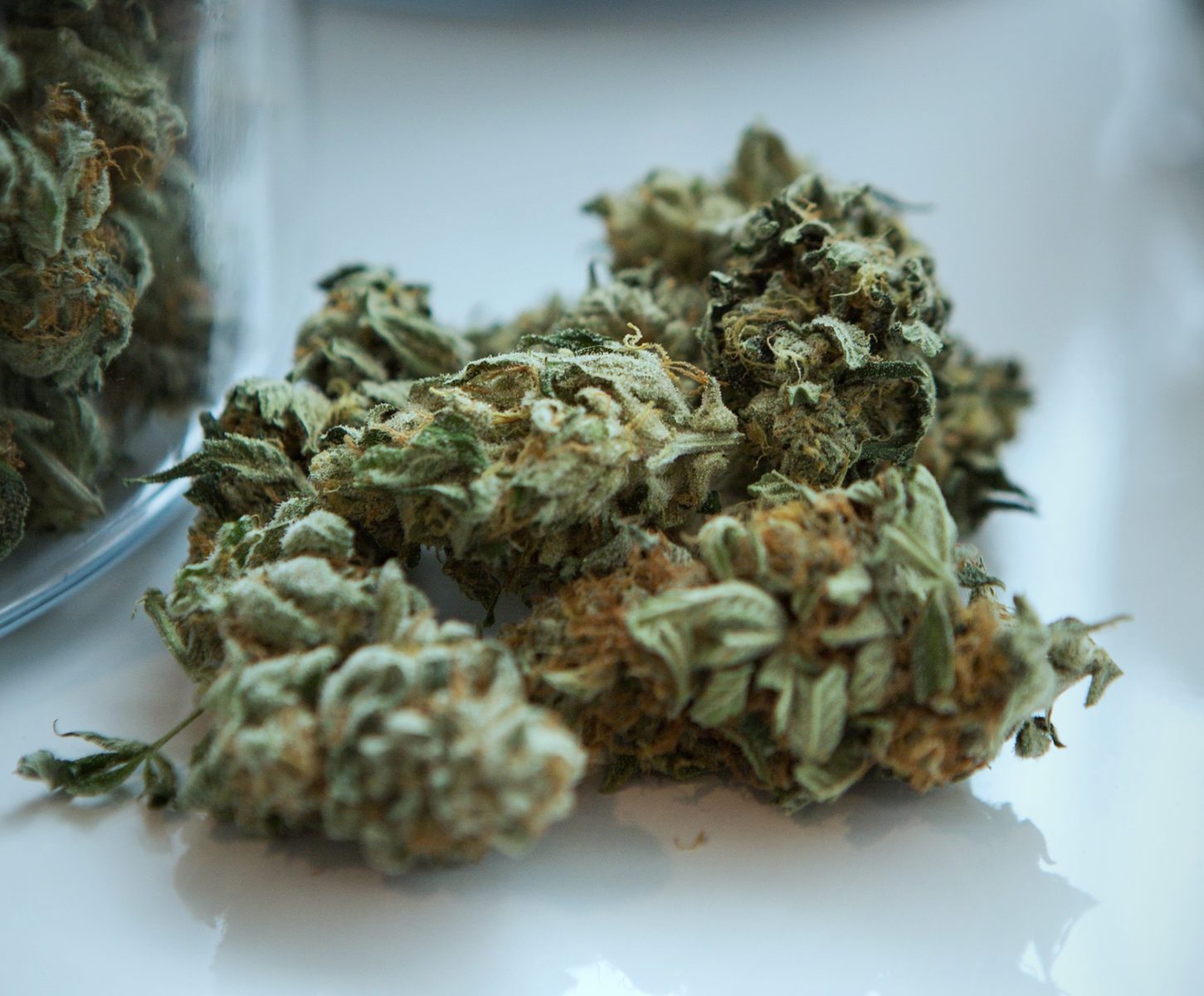
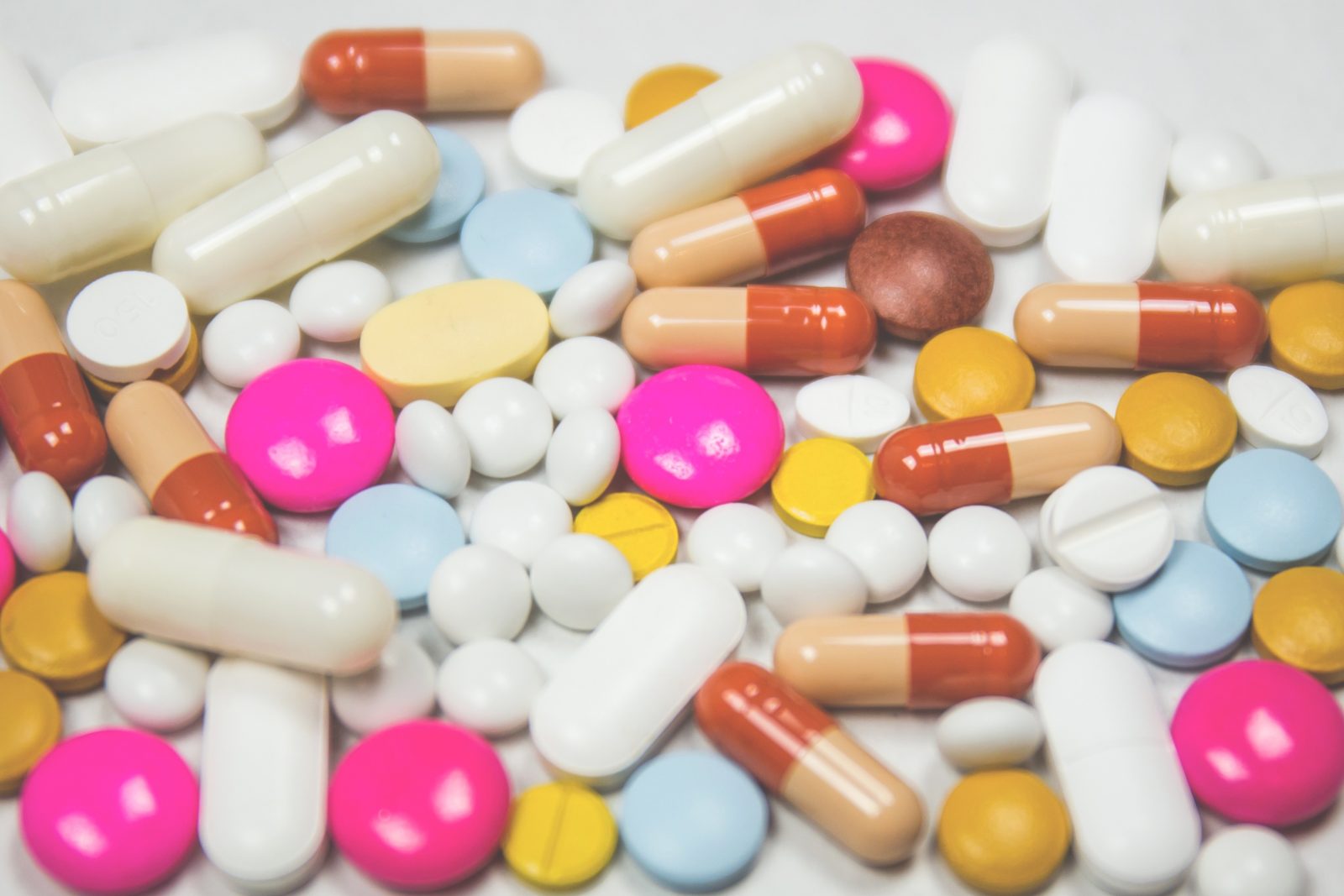
Information About Alcohol And Other Drugs
- Alcohol and Other Drugs
- Risks
- Dependence
- Usage
- Types of Drugs
- Alcohol
- Cannabis
- Cocaine
- Ecstasy + MDMA
- GHB + Ketamine
- LSD + Magic Mushrooms (Hallucinogens)
- Opioids + Heroin
- Inhalants + Chroming (Paint, Glue and Petrol Sniffing)
- 'Ice' + 'Speed' (Meth/amphetamines)
- Medication
- Sedatives or Sleeping Pills (Benzodiazepines)
- Steroids and Other Performance Enhancing Drugs
- Synthetic Drugs and New Psychoactive Drugs
- Nicotine and Caffeine
This page gives you information about different types of alcohol and other drugs, including medications. There is information about why people use alcohol and other drugs, as well as information about some of the more commonly used drugs in Australia.
There are lots of different reasons why people use alcohol and other drugs. Most people use these substances to feel better in some way. For example, to feel happy, to increase their energy, to manage anxiety or depression, to reduce pain or to cope with stress. People might also use the same type of drug for different reasons. For example, one person might drink alcohol to reduce stress, another person drinks to block out painful memories, and another person drinks alcohol to feel more confident in social situations.
Not everyone who uses alcohol or other drugs will develop a problem or find it hard to stop using. This is true even for illegal drugs. Many people use alcohol or other drugs for a short time before deciding to stop on their own, and others might use every now and then without developing any problems. In fact, nearly half of all Australians have used illegal drugs at some point in their lives, and almost 80% of Australians drink alcohol – yet most of these people will not end up with an alcohol or other drug problem (Australian Institute of Health and Welfare, 2019).
Where can I get more information?
There is more information about why people use alcohol and other drugs in this factsheet by the Australian Alcohol and Drug Foundation.
Not everyone who uses alcohol or other drugs will develop a problem with using, or find it hard to stop using. However, using alcohol or other drugs can cause a lot of problems in someone’s life and may affect things like their physical and mental health, relationships, employment and finances.
How risky or harmful someone’s alcohol or other drug use is can depend on a few factors, including what type of drug they are using, how they are using it (for example, smoking or injecting) and what effect it is having on the person and their life. It’s important to understand the different effects of different types of alcohol and other drugs, and these are listed in more detail in the sections below.
How can someone reduce the harms and risks of using alcohol and other drugs?
There are also things that can be done to reduce the harms or risks for someone who is using alcohol or other drugs – even if they aren’t ready to stop using. These ‘harm minimisation’ strategies might include:
- Trying to get enough sleep and rest
- Drinking plenty of water and eating well
- Looking after physical health and seeing a GP regularly
- Not sharing needles with anyone (for someone who is injecting drugs)
- Looking after mental health and getting support when needed
- Using the drug in a less risky way (for example, not using when alone)
- Avoid mixing different drugs together at the same time
Where can I find out more information?
- Find out more about ways to reduce the risks and harms of alcohol and other drug use (‘harm reduction’) by clicking on the video by Connect4Health below.
- You can also visit the Harm Reduction Australia website or the Harm Reduction Victoria website for more information and resources on harm reduction.
Anyone can develop a problem with alcohol or other drugs, regardless of how old they are, how wealthy they are or where they live. However, the more problems the person has in other parts of their life (like difficult relationships, mental health problems, trauma, unemployment, high levels of stress or unstable housing), the more likely they are to develop a problem if they start using alcohol or other drugs.
Research shows that supporting someone to have strong ‘protective factors’, like having a safe place to live, stable employment or good social supports, is the most important thing in reducing their risk of developing a problem with alcohol or other drugs. Having good ‘protective factors’ is even more important for young people. The video below by YoDAA (Youth Drug and Alcohol Advice) explains more about the importance of ‘protective factors’ for young people.
Remember, having a problem with alcohol or other drugs doesn’t mean you are a bad person. Most people who develop an alcohol or other drug problem are using the substance as a way of coping with something difficult in their life, like trauma, mental illness, stress or grief. It’s important to remember that people can recover from alcohol and other drug problems and that good treatment services are available.
Alcohol and other drugs can be used in many different ways, including:
- Drinking (as a liquid)
- Swallowing as food, tablets, capsules or pills
- Smoking
- Inhaling (breathing in fumes from a bag)
- Snorting (sniffing powder into the nose)
- Injecting into muscles or veins
- Rectal or anal administration (‘shafting’ or ‘shelving’).
Not all drugs can be used in all these ways. For example, cannabis (marijuana) can be smoked or swallowed in food, but it cannot be injected. On the other hand, heroin can be injected, snorted or smoked.
The way that a person uses a drug will change how quickly they feel an effect. For example, someone injecting a drug will usually feel an effect much faster than someone who swallows the same drug in a tablet form. No method of using drugs is ‘safe’, although some methods (such as injecting) might be more risky than other methods (such as swallowing).
Why do people mix different drugs?
Many people use more than one type of substance (such as alcohol, medication or other drugs) at the same time, which is known as ‘polydrug use’. This might be because they want to increase the effects of the substance they’ve taken (for example, drinking alcohol and smoking cannabis to feel more ‘stoned’). It might also be to ‘balance out’ the effects of another substance (for example, smoking cannabis to relax after taking speed or cocaine).
Sometimes the person might take prescription or over-the-counter medications (such as codeine or diazepam [Valium®]) and drink alcohol on the same day without realizing that they are mixing drugs. People may also mix different drugs together if they are unable to get hold of the drug that they usually use and want to feel a similar effect. For example, someone who usually uses heroin might try to ‘substitute’ or replace the effects of heroin by using a combination of other drugs which have similar effects.
What are the risks of mixing different drugs?
Using more than one type of substance at the same time (‘polydrug use’) increases the chances of overdose and can be very dangerous. If someone uses two (or more) substances that have a similar effect, they are more likely to have an overdose because the substances are telling their bodies to do the same thing – either speed up or slow down their central nervous system. For example, using painkillers and drinking alcohol at the same time increases the risk of overdose because both substances slow down the central nervous system.
It is very hard to predict what will happen if someone mixes more than one types of substances together. This is particularly true if someone mixes substances which have different effects on the body. For example, using heroin (which slows down the central nervous system) at the same time as using ice (which speeds up the central nervous system). One way to reduce the risks and harms in someone who is using alcohol or other drugs is to only use one type of drug at a time.
Are there any risks with mixing drugs and medications?
Alcohol, medications and other drugs can interact with mental health medications, like anti-depressants or anti-psychotics. Some of these interactions can be very dangerous. Always speak to your doctor before stopping or increasing the dose of a medication, and tell your doctor if you are drinking alcohol or taking other medications or drugs.
Where can I get more information?
- For more information about reducing the risks of injecting drug use, you can read information about safer injecting published by the Australian Injecting and Illicit Drug Users League (AIVL) here, or watch the short video below by Thorne Harbour Health.
- For more information about mixing mental health medications with alcohol and other drugs, visit the QNADA website here.
- For more information about overdose, please read out our section on ‘Overdose’ in the “Crisis and Emergency Supports” page.
Depressants
‘Depressants’ are a group of substances that slow down the central nervous system and have a calming effect on the body. This means that the messages sent between the brain and the body are slowed down. Depressant drugs are also known as ‘downers’.
Someone who has taken a depressant might feel relaxed, sleepy, confused or clumsy. They will have slower reflexes, breathing and heart rate, and might have slurred speech or blurred vision. Using a depressant does not necessarily mean you will feel sad or depressed – they are called depressants because they slow down or ‘depress’ your central nervous system.
Types of depressant drugs
Depressant drugs include:
- Alcohol
- Cannabis
- Heroin
- Opioid pain killers (such as codeine or morphine)
- Sedative medications (such as Valium® or Xanax®)
- GHB
- Ketamine
The most common depressants used in Australia are alcohol, cannabis and opioid-based pain killers. There is more information about these substances in the sections below.
Overdose
If someone takes a lot of a depressant drug, or mixes two or more depressant drugs together, they can overdose. In a depressant overdose, a person’s breathing and heart rate can slow down to the point where they eventually stop breathing, which could result in brain damage or death. Most fatal drug overdoses involve depressant drugs.
A depressant overdose is very dangerous. If you think someone has taken an overdose, call 000 straight away to get urgent medical help.
Where can I get more information?
- Click on the topics below to find out more about the different types of depressant drugs.
- For more information about what to do if someone overdoses on depressants, read this factsheet here.
Stimulants
‘Stimulants’ are a group of drugs which speed up or ‘stimulate’ the central nervous system. This means the messages between the brain and the body are sent more quickly. Stimulants are also known as ‘uppers’.
Someone who has taken a stimulant drug will feel more alert and awake, have a higher heart rate and lots of energy. They might talk quickly and be restless or fidgety. Stimulants usually give the person a strong sense of pleasure (euphoria) and can make the person feel more confident. They can also cause anxiety, paranoia, sweating, and dehydration.
Types of stimulant drugs
There are many different types of stimulants, including:
- Methamphetamines (‘speed’ and ‘ice’)
- Amphetamines (including medications like Ritalin® and dexamphetamine)
- Caffeine
- Cocaine
- Ecstasy (MDMA)
- Tobacco (nicotine)
The most common stimulants used in Australia are caffeine and tobacco.
Overdose
If someone takes a lot of stimulants, or takes more than one type of stimulant at the same time, they can overdose. The person’s breathing and heart rate can increase to dangerously high levels. This can cause panic, confusion, overheating, seizures, brain damage or death.
It is possible to die from a stimulant overdose. If you think someone has taken an overdose, call 000 straight away to get urgent medical help.
Where can I get more information?
- Click on the topics below to find out more about the different types of stimulant drugs.
- For more information about what to do if someone overdoses on stimulants, read this factsheet by the Penington Institute here.
- For more information about overdose, see our section on overdose in the ‘Crisis and Emergency Supports’ page.
Halliconogens
Hallucinogens (also known ‘psychedelics’) are a group of drugs which change a person’s perception. They can make someone see, hear, smell, feel or taste things that aren’t physically there, or are different to how they appear in reality. This is also called ‘tripping’ or ‘having a trip’.
Types of hallucinogen drugs
There are many different types of hallucinogen drugs, including:
- LSD (‘acid’)
- ‘Magic mushrooms’ (psilocybin)
- DXM
- DMT
- ‘NBomes’
- ‘Bath salts’ (mephedrone)
Someone who uses a hallucinogen drug may feel happy and relaxed and see or hear things that aren’t really there. They may experience confusion, panic, an increased heart rate, dizziness and trouble concentrating.
Hallucinogen overdose
If someone has too much of a hallucinogen drug, or mixes more than one type of hallucinogen drug together, they may have an overdose. The person can become confused, start to panic, overheat, behave strangely, or have a seizure.
An hallucinogen overdose might cause the person to behave dangerously or take extreme risks which can result in death or serious injury. If you think someone has taken an overdose, call 000 straight away to get urgent medical help.
Where can I get more information?
- Click on the topics below to find out more about the different types of hallucinogen drugs.
- For more information about hallucinogens, click here to read a factsheet by the Australian Alcohol and Drug Foundation.
Alcohol is a type of depressant drug, as it slows down any messages travelling from the brain to the body. Someone who has drunk alcohol might feel more confident and talkative to begin with, but as they drink more will become more clumsy, slur their speech and eventually lose consciousness (‘pass out’).
There are many different types of alcohol available, including beer, wine and spirits. The level of alcohol in a drink is measured as a percentage (for example, 7% alcohol). You can also measure the number of ‘standard drinks’ which will change depending on how strong the alcohol is (for example, there are 1.5 standard drinks in a 150ml glass of wine).
- You can see how many standard drinks are in different types of alcohol by clicking here, or visit the Australian National Health and Research Council (NMHRC) website here.
Alcohol dependence and withdrawal
If someone drinks alcohol every day, they may become physically dependent on it. This means that they will experience withdrawal symptoms, such as sweating and shaking, if they stop drinking or try to cut down.
Alcohol withdrawal can be very dangerous, and cause seizures or death. For this reason, someone who is physically dependent on alcohol should not stop drinking suddenly (‘cold turkey’) unless they are closely supervised by a doctor.
Does alcohol cause brain damage?
If someone drinks heavily over a long period of time, they may develop brain damage or an ‘acquired brain injury’ (ABI). There are several types of alcohol-related brain damage, which can affect the person’s memory, behaviour and movement.
Alcohol is particularly harmful for young people because their brain is still developing. For this reason, teenagers and pregnant women are advised to avoid drinking alcohol.
- To find out more about alcohol-related brain damage, click here to visit the Better Health Channel website.
Can you overdose on alcohol?
It is possible to overdose on alcohol if you have too much alcohol at once, or if you mix alcohol with other drugs or medications. Alcohol overdose can cause death and is known as ‘alcohol poisoning’. Alcohol overdose often causes the person to lose consciousness (‘pass out’) and vomit, and they may accidentally choke on their vomit. If you think someone has overdosed on alcohol, contact 000 straight away to get medical help.
- Learn more about the signs of alcohol overdose by clicking here to read a factsheet by the Pennington Institute.
Where can I get more information?
- Click here to read a factsheet on alcohol by the Australian Alcohol and Drug Foundation.
- To find out more about the risks of using alcohol during pregnancy, click here to read a factsheet by the Women’s Alcohol and Drug Service (WADS).
- Click here to read a factsheet by Harm Reduction Victoria about ways to reduce the risks of alcohol use.
- You can read the Australian National Guidelines on Alcohol by clicking here, or visit the Australian National Health and Research Council (NMHRC) website here.
Cannabis is a type of depressant drug, but in higher doses it can also act as a hallucinogen (causing the person to see or hear things which aren’t real). Cannabis is also known as marijuana, ‘pot’, ‘grass’, ‘weed’, ‘bud’ or ‘ganga’.
Cannabis is usually smoked in a ‘joint’ (hand-rolled cigarette), a pipe or a ‘bong’ (a glass or plastic container with a pipe which is used to inhale the cannabis smoke). Smoking cannabis with a bong will give a much stronger effect than smoking it in a joint or pipe. Cannabis can also be cooked and eaten, for example in a cookie or brownie. Most people mix cannabis with tobacco, which means that if the person smokes cannabis regularly they are likely to become addicted to tobacco (nicotine) as well as cannabis.
In Melbourne, a gram of cannabis can cost between $15-$30.
If someone smokes cannabis every day, they will become physically addicted and have withdrawal symptoms like anxiety, sweating and poor sleep for a few days after they stop smoking.
- For more information about the effects of cannabis, click here to read a factsheet by the Australian Alcohol and Drug Foundation.
- Click on the video below by the National Cannabis Prevention and Information Centre (NCPIC) to find out more about how cannabis works, the effects of cannabis and how cannabis is used.
What is ‘medicinal cannabis’?
Medicinal cannabis can be used to treat some medical conditions (including severe pain and vomiting). Medicinal cannabis is made by taking out some of the chemicals from the cannabis plant and making them into an oil, capsule or nasal spray. This means it will not make the person feel ‘high’ when they take it. You cannot smoke medicinal cannabis in Australia.
- For more information on medicinal cannabis, click here to read a factsheet by the Australian Alcohol and Drug Foundation, or visit the DrugInfo website here.
What is ‘synthetic cannabis’?
Synthetic cannabis is a chemical made to mimic or replace the cannabis plant. It is made in a laboratory and can be sold under many different names, such as ‘Kronic’, ‘Spice’ or ‘K2’. There are many different types of synthetic cannabis, and new types are developed all the time. This makes it hard to know what the effects will be of taking a particular type of synthetic cannabis.
- For more information on synthetic cannabis, click here to read a factsheet by the Australian Alcohol and Drug Foundation.
Where can I get more information?
- For information about how to reduce the harms of using cannabis, click here for a factsheet by Harm Reduction Victoria.
- For more information about the relationship between cannabis and mental illness, click on the video below by NCPIC (National Cannabis Prevention and Information Centre).
Cocaine is a stimulant drug which speeds up the messages between the brain and the body. The effects of cocaine last for a shorter period of time than some other stimulants (such as ice), but make the person using the drug feel very confident, happy and energetic.
Cocaine is almost always snorted (inhaled or sniffed into the nose) but it can be smoked, snorted, chewed or injected. It is also known as ‘Charlie’, ‘snow’ or ‘blow’.
In Melbourne, cocaine can cost between $350-$450 per gram.
Where can I get more information?
- For more information on cocaine, including the effects, risks of using and withdrawal symptoms, click here to read a factsheet by the Australian Alcohol and Drug Foundation or click here to read a factsheet by the National Drug and Alcohol Research Centre (NDARC).
- Click here to learn more about reducing the risks of cocaine use in a factsheet by Harm Reduction Victoria.
- To find out more about how cocaine and other stimulants can interact with mental health medications, visit the QNADA (Queensland Network of Alcohol and Drug Agencies) website here.
- Click here to find out more about how to respond to an overdose on stimulants such as cocaine.
What is ecstasy and MDMA?
‘Ecstasy’ is both a stimulant and a hallucinogen drug. It is usually taken as a small tablet or pill, often in different colours with a picture stamped into it. Ecstasy is supposed to contain a drug called MDMA, but can actually contain several different types of drugs, including MDMA, PMA, speed, LSD or ketamine. For this reason, someone might have a very different reaction depending on what drugs were in the particular ecstacy pill which they have taken.
MDMA (also known as ‘MD’) can also be sold on it’s own in a capsule or powder.
An ecstasy pill or MDMA capsule usually costs around $20-$40 in Australia.
- Click here for more information from the Australian Alcohol and Drug Foundation explaining what ecstasy is made from, what the effects are and what the risks are in taking it.
- To find out more about the effects of ecstacy and how to reduce the harms of taking ecstacy, click here to read a factsheet by Harm Reduction Victoria.
What is ‘PMA’ and ‘PMMA’?
PMA and PMMA are stimulant drugs which have similar effects to MDMA. They might be sold as ‘ecstasy’ and someone taking an ecstasy pill may not realise that the ecstasy pill contains PMA/PMMA, rather than MDMA. High doses of PMA or PMMA can cause death.
- For more information about PMA and PMMA, click here to read a factsheet by the Australian Alcohol and Drug Foundation.
What is ‘pill testing’?
A ‘pill testing’ kit is used to test what types of drugs are contained in a certain pill or powder. For example, the kit will test whether an ecstasy pill contains any MDMA or PMA. This could help someone to understand which drugs they are really buying and reduce the risk of accidental overdose. Pill testing is not yet widely used in Australia.
- For more information on pill testing, you can read an article on the National Drug and Alcohol Research Centre website by clicking here.
Where can I get more information?
- Click here to read about how ecstasy can interact with mental health medications.
- To find out about the risks of taking ecstasy during pregnancy, read this factsheet about pregnancy and amphetamines here by the Women’s Alcohol and Drug Service (WADS).
- Read more about how to respond to a stimulant overdose in this factsheet here by the Penington Institute.
GHB
GHB (gamma hydroxybutyrate) is a type of depressant drug. It slows down the messages between the body and the brain and can make the person feel relaxed, happy and sleepy. People also say that it increases their sex drive. GHB comes in a liquid and is often sold in a small fish-shaped soy sauce container. It is usually swallowed but can be injected. Only a very small amount (usually a few millilitres) is needed to feel an effect. For this reason, it is very easy to overdose on GHB, especially if it is used with alcohol or other depressant drugs. A GHB overdose is also known as a ‘blowout’ and can cause death.
GHB is also known as ‘grevious bodily harm’, ‘juice’, ‘liquid fantasy’ or ‘G’.
- For more information about the effects of GHB, including signs of overdose and withdrawal, click here to read a factsheet by the Australian Alcohol and Drug Foundation.
- Read this factsheet here from Harm Reduction Victoria explains how to reduce the harms for someone using GHB and other drug interactions.
Ketamine
Ketamine is used by medical practitioners and vets as an anesthetic (to sedate someone during surgery). It is both a depressant drug and a hallucinogen drug. Ketamine comes in a powder that is usually snorted or swallowed, but can be injected. Sometimes it is made into pills which are swallowed. Ketamine is also known as ‘Special K’ and ‘K’. In Melbourne, ketamine can cost between $50-$150 for half a gram.
- For more information about the effects of ketamine, including signs of overdose and withdrawal, click here to read a factsheet by the Australian Alcohol and Drug Foundation.
Where can I get more information?
- For more information about responding to an overdose on depressant drugs, click here to read a factsheet by the Pennington Institute.
There are many different types of hallucinogen drugs (hallucinogens). These include natural or plant-based hallucinogens (such as ‘magic mushrooms’ or ayahuasca) as well as synthetic or ‘man-made’ hallucinogen drugs (such as LSD).
Some of the more commonly used hallucinogen drugs are listed below. There are also many new drugs (known as ‘synthetic drugs’ or ‘new psychoactive drugs’) which are hallucinogens. You can find out more about these drugs in the section below on ‘Synthetic and New Psychoactive Drugs’.
- Click here to read more about hallucinogens in a factsheet by the Australian Alcohol and Drug Foundation.
- For more information about new synthetic drugs, please see the section below on ‘Synthetic and New Psychoactive Drugs’.
Ayahuasca
Ayahuasca is a plant-based hallucinogen drug which is usually consumed as a tea. It has been used by traditional healers and in religious ceremonies, but can be used by people wanting to have a ‘spiritual’ experience or experience hallucinations (see or hear things which are not real).
- For more information on ayahuasca, click here to read a factsheet by the Australian Alcohol and Drug Foundation.
DMT
DMT (dimethyltryptamine) is a strong hallucinogen drug which causes intense hallucinations (seeing or hearing things which are not real). It usually comes as a powder or crystal form and can be smoked in a pipe or swallowed. It may also be known as ‘Dimitri’ or ‘changa’.
- For more information on DMT, including ways of reducing the risks of using DMT, click here to read a factsheet by Harm Reduction Victoria.
DXM
DXM (dextromethorphan) is found in many over-the-counter cold medications and cough syrups. It is a depressant drug and a hallucinogen, and can make people feel ‘spaced out’ or feel like they are having an ‘out of body’ experience. It may also be known as ‘Dex’ or ‘Vitamin D’. Since it is sold legally as a cough syrup, DXM is not very expensive to buy. Medications which contain DXM often contain other ingredients and drugs (such as paracetamol or codeine) which can be deadly if the person takes too much of them.
- For more information on DXM, visit the YoDAA (Youth Drug and Alcohol Advise) website.
LSD (‘Acid’)
LSD (also known as ‘acid’) is a synthetic (man-made) hallucinogen drug. It usually comes in squares of blotting paper (‘tabs’) that have been soaked in LSD. The person puts the blotting paper on their tongue and swallows it. Using LSD causes the person to have hallucinations and see or hear things which aren’t real. This is known as a ‘trip’. LSD can cost between about $15-$35 for a tab (one square of blotting paper). LSD is also known as ‘acid’, ‘tabs’ or ‘trips’.
- For more information LSD, including the effects of using it and signs of overdose, click here to read a factsheet by the Australian Alcohol and Drug Foundation.
- Click here to read more about how to reduce the harms of using LSD in a factsheet by Harm Reduction Victoria.
‘Magic Mushrooms’ (Psilocybin)
‘Magic mushrooms’ (or psilocybin) is a naturally occurring hallucinogen drug which is found in a particular type of wild mushroom. The mushrooms can be eaten fresh, cooked or brewed into a tea. ‘Magic mushrooms’ cause hallucinations, making people see or hear things that aren’t really there. They are also known as ‘shrooms’, ‘mushies’ or ‘caps’.
Magic mushrooms look very similar to normal brown mushrooms, but it can be hard to tell them apart from other types of wild mushrooms. Some types of wild mushrooms are poisonous and can be deadly if touched or eaten, so it can be very dangerous to pick or buy wild mushrooms. It is also very hard to know how much of the active drug (psilocybin) is contained in each mushroom.
Opioids are a group of depressant drugs which slow down the messages between the brain and the body. They are used to reduce physical pain and also slow down the heart rate and breathing rate. In higher doses, opioids can make people relaxed and feel a sense of pleasure (euphoria). Opioid drugs are highly addictive and there is a risk of death by overdose. If someone takes more than one type of opioid together, takes a high dose of opioids, or mixes opioids with other depressant drugs (such as alcohol), their heart rate and breathing can slow down so much that they lose consciousness (‘pass out’) or die.
Types of opioids
Opioids include both illegal drugs, such as heroin, and certain types of pain killers, known as ‘opioid pain medications’. Some opioids are plant-based and come from the opium poppy, whilst others are synthetic or ‘man-made’. Common types of opioid pain medications include codeine (Panadeine®, Panadeine Forte® and Nurofen Plus®), fentanyl, morphine, oxycodone (Endone® or OxyContin®), buprenorphine (Subutex® or Suboxone®) and methadone.
Heroin
Heroin is a type of opioid and a depressant drug which is illegal in Australia. It comes in a powder form and is usually injected or smoked. Heroin can be expensive in Australia, costing between $50-$100 for 0.1gram (a ‘point’). Heroin is also known as ‘dope’, ‘smack’, ‘H’ or ‘gear’.
- For more information on the effects of heroin, including signs of withdrawal, click here to read a factsheet by the Australian Alcohol and Drug Foundation or click here to read a factsheet by NDARC (National Drug and Alcohol Research Council)
Opioid pain medications (pain killers)
Opioid pain medications (such as codeine) usually come in a tablet or capsule form, but can also be in liquid form (such as morphine). They may be prescribed by a doctor, or purchased illegally on the street or ‘black market’. It is illegal to use a medication which is not prescribed for you, or to misuse a medication which you have been prescribed. If bought illegally, opioid pain medications may cost as much as $10-$30 per tablet.
Many people do not realise that medications which are prescribed by their doctor for pain relief can be addictive and dangerous. In fact, over 80% of the drug overdoses which occur in Australia involve some type of prescription or over-the-counter medication.
- For more information about codeine, please click here to read a factsheet by the Australian Alcohol and Drug Foundation.
- For more information about oxycodone, please click here to read a factsheet by the Australian Alcohol and Drug Foundation.
- For more information about fentanyl, please click here to read a factsheet by the Australian Alcohol and Drug Foundation.
Using pain medications safely
Many people will be prescribed opioid pain medications at some point in their life to manage short-term pain. For example, someone might be prescribed codeine (such as Panadeine Forte®) after having their wisdom teeth removed, or after having a minor operation. Evidence shows that opioid pain medications are not useful in treating chronic or long-term pain (except for cancer-related pain) and they should only be used for a short time. Opioid pain medications are very addictive and can also lead to a deadly overdose. In fact, most fatal (deadly) overdoses in Victoria have involved a type of opioid pain medication.
- Click here to find out more about the possible risks of opioid pain medications in a factsheet by NPS MedicineWise.
- For more information about using opioid pain medications safely, please click here or here to read factsheets by NPS MedicineWise.
- Download the ‘Bitter Pill to Swallow’ brochure here for more information about how to reduce the risks of using opioid pain medications.
- Click here to read a factsheet about the risks of mixing opioid pain medications with sedatives (‘benzodiazepines’) published by QNADA (Queensland Network of Alcohol and Drug Agencies).
What is ‘methadone’ and ‘buprenorphine’?
Methadone (Methadone Syrup® and Biodone Forte®) and buprenorphine (Suboxone® or Subutex®) are opioid medications which are used to treat addiction to heroin or other opioids. They are prescribed by a doctor and used to manage withdrawal symptoms and cravings so that the person can stop using illegal opioids. Over time, the person can slowly reduce the amount of methadone or buprenorphine that they take, until they are no longer taking any opioids.
Methadone (also known as ‘done’) comes in a liquid or syrup (Methadone Syrup® and Biodone Forte®). Buprenorphine (also known as ‘bupe’) can come in a tablet (Subutex®) or a film which dissolves under the tongue (Suxoxone®). Suxoxone® contains both buprenorphine and naloxone. It is possible to buy these medications on the street or ‘black market’, although their use and prescription is carefully monitored by doctors and pharmacists.
- For more information on methadone, including the effects and signs of withdrawal and overdose, click here to read a factsheet by the Australian Alcohol and Drug Foundation.
- For more information on buprenorphine, including the effects and signs of withdrawal and overdose, click here to read a factsheet by the Australian Alcohol and Drug Foundation.
- To learn more about these medications (known as ‘opioid replacement therapy’), please visit our section on ‘Medications for Alcohol and Other Drug Problems’ on the Navigating the System page of the website.
What is ‘naloxone’ (Narcan® or Nyxoid®)?
Naloxone is a medication that is used to treat opioid overdose by ‘reversing’ the effects of opioid drugs such as heroin or codeiene. In Victoria, naloxone can be purchased from the chemist without a script or with a prescription from your GP. It is available in injectable form (Narcan®) or in a nasal spray (Nyxoid®). If you or your family member uses any opioid based medications or drugs, it is recommended that you know how to use naloxone and have access to it in case of an accidental overdose.
- Click here to find out more about the ‘Take Home Naloxone Program’ including where families can access naloxone
- Click here to read a factsheet on naloxone by the Alcohol and Drug Foundation.
Where can I get more information?
- Learn more about how to respond to an opioid overdose by reading the Pennington Institute factsheets here or here.
- For more information on the risks of using opioids during pregnancy, the Women’s Alcohol and Drug Service (WADS) provides the following fact sheets:
- Click here to read about the interactions between opioids and mental health medications on the QNADA (Queensland Network of Alcohol and Drug Agencies) website.
Chroming and inhalants
‘Chroming’ is the term used to describe inhaling or sniffing the fumes from inhalants – substances like aerosol spray cans, paint, cleaning fluid, glue, petrol and nitrous oxide (‘laughing gas’). These substances are called ‘inhalants’ because the fumes are ‘inhaled’ or breathed in through the nose or mouth. Inhalants can either be poured onto a cloth and ‘sniffed’, or inhaled from a container or bag. Inhalants are both a depressant drug and a hallucinogen drug. Inhalant use might be known as ‘glue sniffing’, ‘huffing’, or ‘poppers’.
Inhalants such as glue and paint are not expensive and can often be bought from a hardware store. In some states, there are limits on who can buy cans of spray paint. Nitrous oxide (laughing gas) is bought illegally on the street or ‘black market’.
Where can I find more information?
- Click here for more information about inhalants in a factsheet by the Alcohol and Drug Foundation.
- Find out how to reduce the harms of nitrous oxide use in a factsheet here by Harm Reduction Victoria.
- For information about the risks of inhalant use during pregnancy, click here to read a factsheet by the Women’s Alcohol and Drug Service (WADS).
- Click here to download a detailed guide on inhalant use for families by the Government of Western Australia, which includes information about the effects of inhalants, ways to reduce the risks of using inhalants and how to talk to your family member about inhalant use.
Amyl Nitrite
Amyl nitrite (also known as ‘amyl’, ‘poppers’, ‘snappers’ and ‘rush’) is a clear, yellowish and highly flammable drug. It comes in liquid form in either a small bottle or a small glass capsule.
Amyl nitrite is a ‘vasodilator’ which means that it expands the blood vessels in the body, greatly reducing blood pressure and relaxing certain muscles in the body. It is usually used by people to try and improve their sexual experiences.
People using amyl nitrate breathe in the fumes from the bottle through the nose or mouth, or on a piece of cloth soaked with the substance. Amyl nitrite is extremely poisonous and should not be swallowed. Swallowing the liquid can cause death. Mixing amyl nitrite with amphetamines and stimulants (like ice, cocaine, speed or ecstasy) is also very dangerous and can cause heart attack (cardiac arrest) and death.
It is illegal in Australia to sell amyl nitrite to use as a drug.
Where can I get more information?
For more information about the effects of amyl nitrate, visit the Touchbase website by clicking here.
Nangs (Nitrous Oxide)
Nitrous Oxide, which is more commonly referred to as ‘Nangs’, is a colourless and tasteless gas.The recreational use of Nangs involves inhaling the gas, commonly into a balloon or directly into the mouth. Nitrous Oxide is also used in baking and can be purchased in store or online.
For more information on Nangs, you can read a factsheet created by the Alcohol and Drug Foundation here.
Methamphetamines and amphetamines are a type of stimulant drug. There are three types of methamphetamines in Australia: crystal methamphetamine (‘ice’), powdered methamphetamine (‘speed’) and ‘base’ (a waxy or resin-like type of methamphetamine). Base is very rarely used in Australia. Most people who use methamphetamines in Australia use either ice or speed.
Ice (crystal methamphetamine)
‘Ice’ is a form of methamphetamine, which is stronger than powdered methamphetamine (‘speed’). It is also known as ‘shard’, ‘meth’ or ‘crystal’. It comes in a crystal or powder form, and looks similar to rock salt.
Ice is usually smoked or injected. In Melbourne, it can cost between $50-$100 for 0.1 grams (known as a ‘point’).
- For detailed and accurate information about ice, including information booklets, toolkits and resources for people using ice and their families, click here to visit the ‘Cracks in the Ice’ website (funded by the Australian Department of Health).
- Click here to find out how to reduce the harms of ice use in a factsheet by Harm Reduction Victoria.
- To learn more about the effects of ice, including long-term effects and withdrawal symptoms, click here to read a factsheet by the Australian Alcohol and Drug Foundation or click here to view the ice factsheet on the Positive Choices information website.
Speed
Speed is a type of methamphetamine which usually comes in a powder, and is not as strong as crystal methamphetamine (‘ice’). Speed is usually swallowed, snorted or injected. It can also be known as ‘whizz’, ‘louie’ or ‘goey’.
- Click here to find out more information about speed, including how to reduce the harms from using speed, in a factsheet from Harm Reduction Victoria
Where can I get more information?
- For more detailed information about methamphetamines such as ice and speed (including the impact on mental health and withdrawal symptoms), click here to download a booklet from the Australian Department of Health.
- Visit the ‘Cracks in the Ice’ website (funded by the Australian Department of Health) for detailed information and resources by clicking here.
- For information about the risks of using methamphetamines during pregnancy, click here to read a factsheet by the Women’s Alcohol and Drug Service (WADS).
- To learn more about overdose on ice and other amphetamines, click here to read a factsheet by the Pennington Institute.
- Click here to read a support guide for family and friends of someone using ice by the Australian Alcohol and Drug Foundation.
- Click on the video below to learn more about how methamphetamines affect the brain.
Many people do not realise that medications which are prescribed by their doctor can be addictive and dangerous. In fact, over 80% of the drug overdoses which occur in Australia involve some type of prescription or over-the-counter medication.
Prescription medication includes medications prescribed by a GP. While not all prescribed medications are addictive, many pain relief medications are.
Over-the-counter medications are medicines that can be bought from pharmacies without a prescription, supermarkets, health food stores and other retailers. For example, medicines such as cold and cough remedies, aspirin- and paracetamol-based painkillers, or fungal creams are over-the-counter medications. (Please note, prior to the 2018 codeine rescheduling, many codeine products were over-the-counter. They are now prescription-only medications.)
As there are many different types of prescription and over-the-counter medications available, please refer to the category of medication above. For example, codeine falls under ‘Heroin, pain killers, and other opioids’. Sleeping pills fall under ‘sedatives’ as they are usually a type of benzodiazepines
Where can I get more information?
- Click here to open the Medication Support and Recovery Service website, a specialist addiction service for people who have problems with their use of prescription or over-the-counter medications.
Benzodiazepines (or ‘benzos’) are a type of sedative drug that are used in the short-term to help people sleep and reduce anxiety. Benzodiazepines are a depressant drug which slow down the messages between the brain and the body. These drugs come in a tablet or pill which can be prescribed by a doctor, or bought illegally on the street or the ‘black market’. They are usually swallowed but can be crushed and injected. Benzodiazepines are also known as ‘benzos’, ‘zannies’ (Xanax), ‘bricks’ or ‘vallies’ (Valium).
Common types of benzodiazepines include:
- Valium® (diazepam)
- Xanax® (alprazolam)
- Temaze® or Normison® (temazepam)
- Serepax® (oxazepam).
Benzodiazepines are very addictive and should not be used for more than a few weeks at a time. If someone takes too many benzodiazepines, or mixes benzodiazepines with other depressant drugs (such as opioid pain medications or alcohol), they may accidentally overdose and die.
If someone has been using benzodiazepines regularly for several weeks or months, they are likely to have withdrawal symptoms such as anxiety, poor sleep, headaches and memory problems for a few days when they cut down or stop using. It can be very dangerous to stop using benzodiazepines suddenly (‘cold turkey’) due to the risk of having a seizure. In serious cases this can cause death so it is recommended that someone sees a medical doctor before deciding to stop using benzodiazepines if they have been using them every day for several weeks.
Where can I get more information?
- For more information on benzodiazepines, including the effects and withdrawal symptoms, click here to read a factsheet by the Australian Alcohol and Drug Foundation.
- Click here to read a factsheet about the risks of mixing benzodiazepines with opioid pain medications published by QNADA (Queensland Network of Alcohol and Drug Agencies).
- Find out more about the risks of using benzodiazepines during pregnancy by clicking here to read a factsheet by the Women’s Alcohol and Drug Service (WADS).
- To learn more about reducing the risks of benzodiazepine use, click here to download the ‘Bitter Pill to Swallow’ brochure.
- For more detailed information about benzodiazepines, visit the Reconnexion website by clicking here.
Steroids are part of a group of drugs known as ‘performance and image enhancing drugs’ which are taken by someone to improve their physical appearance or performance (for example, by increasing muscle size). These drugs can also be used to increase sports performance, help the body recover from injury, increase sexual activity or alter the colour of someone’s skin.
Performance and image enhancing drugs include steroids, hormones and peptides.
- Hormones (such as ‘growth hormones’ and ‘testosterone’) are naturally produced by the body. There are also several types of artificial hormones which can be bought and used to increase muscle size or sports performance. Hormones are usually injected.
- Steroids help the growth and repair of muscle tissue. They are usually injected straight into the muscle by people wanting to increase their muscle size or sports performance. Steroids are also known as ‘roids’ or ‘juice’. There can be serious health problems (including problems with heart, liver and kidneys) in people who use steroids over a long period of time. They can also lead to people behaving aggressively.
There are also other types of medications, chemicals and other drugs which people can take in an attempt to increase their performance or change their appearance. This includes drugs to make the skin appear more tanned, to increase someone’s sex drive or cause an erection. These drugs can be toxic and very harmful if used incorrectly, and some have not been approved for safe use in Australia.
Where can I get more information?
- In Victoria, you can call the Steroid Education Program worker on 0417 529 678 to get more information or speak to a steroid education worker about reducing the risks of steroid use.
- For more information about performance and image enhancing drugs, click here to read a factsheet by the Australian Alcohol and Drug Foundation.
- Click here to read more detailed information about steroids in a factsheet by the Australian Alcohol and Drug Foundation.
- To find out more about safer injecting practices, click here to download a factsheet from AIVL or visit the Touchbase website here.
‘Synthetic drugs’ or ‘new psychoactive substances’ are a group of drugs that are man-made chemicals designed to copy the effect of other drugs, such as cannabis, cocaine, or ecstasy. They can also be known as ’emerging psychoactive drugs’. New psychoactive drugs are also made to replace drugs that have been banned. The drugs are made by slightly adjusting the chemical structure of the drug, and new versions of the drugs are developed all the time.
This makes it very difficult to know exactly what the new drugs are made of, and what their effects will be. New psychoactive drugs are unregulated and untested, and in many cases they are also illegal.
New psychoactive substances include drugs such as:
- Synthetic cannabis (such as ‘Kronic’, ‘K2’ and ‘Spice’)
- Mephedrone or ‘bath salts’
- ‘Flakka’
- ‘NBOmes’ (phenethylamines)
New psychoactive substances can come in many different forms. They can be swallowed as a tablet or powder, smoked, snorted into the nose, dissolved under the tongue or injected. The effects of new psychoactive substances vary greatly. Most act as both a stimulant drug and a hallucinogen drug. It is possible to overdose on new psychoactive drugs and there have been several cases where someone has died after taking a new psychoactive drug.
Where can I get more information?
- Click here to read information about new psychoactive drugs on the Australian Alcohol and Drug Foundation website.
- For information on different types of psychoactive substances, click here to read a factsheet by the Australian Alcohol and Drug Foundation or click here to read a factsheet by the National Drug and Alcohol Research Council (NDARC).
- For more information about synthetic cannabis, read the section above on ‘Cannabis’ or click here to read a factsheet by the Australian Alcohol and Drug Foundation.
- To learn more about how to respond to an overdose on new psychoactive drugs, click here to read a factsheet by the Pennington Institute.
- For more information about ‘NBOmes’, click here to read a factsheet by the Australian Alcohol and Drug Foundation.
Caffeine
Caffeine is found in coffee, tea, energy drinks (such as ‘Red Bull®’), some soft drinks and caffeine tablets. Caffeine is a stimulant drug which speeds up the heart rate and makes someone feel more awake and alert. Caffeine is swallowed in a drink (such as coffee or a soft drink) or in a tablet (such as a NoDoz® caffeine tablet).
Most people in Australia have caffeine in some form or other, and many people are addicted to it. Caffeine withdrawal symptoms can include headaches, sweating and anxiety. It is possible to die from a caffeine overdose, although this is rare.
- For more information on caffeine, including signs of withdrawal and levels of caffeine in various drinks, click here to read a factsheet by the Australian Alcohol and Drug Foundation.
- Click here to read more information about caffeine, including recommended daily limits of caffeine use, on the Victorian Government Better Health website.
Tobacco and nicotine
Tobacco comes from the dried leaves of the tobacco plant. The main chemical in tobacco is nicotine, which is a stimulant drug. Tar and carbon monoxide are also released when tobacco is smoked. Tobacco products include cigarettes, cigars, chewing tobacco and snuff. Tobacco is usually smoked in a cigarette or cigar, but can also be chewed.
Tobacco is highly addictive and smoking tobacco causes a large number of physical health problems, including cancer. In Australia, a packet of 25 cigarettes can cost between $20-$30.
- Click here to read a factsheet on tobacco by the Australian Alcohol and Drug Foundation.
- Find our more detailed information about smoking and tobacco use, including tips for quitting, on the Victorian Government Better Health website here.
- Contact Quit Victoria on 13 78 48 or visit their website here for more information, resources and support options.
E-Cigarettes/Vaping
‘E-cigarettes’, which may also be referred to as ‘Vapes’, look like tobacco cigarettes, but do not contain tobacco and do not produce smoke. Instead, they are a battery-powered device which ‘vaporises’ a liquid by heating it and turning it into a gas which you then inhale. Using e-cigarettes is also known as ‘vaping’. Some e-cigarettes contain nicotine and some do not contain any nicotine but have ‘flavours’ such as apple, coffee or chocolate. In Victoria, it is illegal to use or buy an e-cigarette which contains nicotine.
E-cigarettes are a relatively new product and very little is known about the possible harms in using them. If the e-cigarette does contain nicotine, then the person using them may become addicted to nicotine in the same way they would if they were smoking tobacco.
- For more information on e-cigarettes, click here to read a factsheet by the Australian Alcohol and Drug Foundation, click here to read a factsheet by the Alcohol and other Drug Foundation or click here to visit the Victorian Government Better Health website.
- To read more about the laws relating to the use of e-cigarettes, click here to visit the Quit Victoria website.




